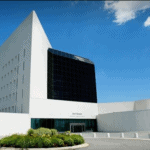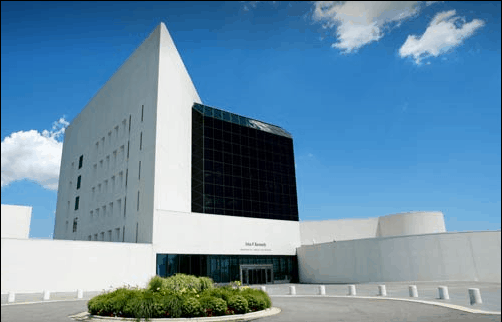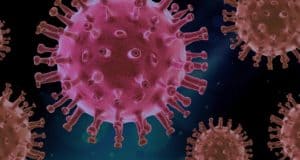 I was in sixth grade when President John F. Kennedy was assassinated. My family lived in Berkeley, California. I was home ill that fateful day with yet another bout of chronic tonsillitis.
I was in sixth grade when President John F. Kennedy was assassinated. My family lived in Berkeley, California. I was home ill that fateful day with yet another bout of chronic tonsillitis.
As I watched morning television at 10:20 am with my 3-year old younger brother, KTVU (Oakland) interrupted Miss Nancy’s Romper Room. We heard shocking news that the President had been shot. (I lived on the West Coast. If you lived on the East Coast, it was 1:20 pm when Walter Cronkite interrupted the daytime soap opera, As the World Turns, to tell you this horrific news.)
I called to my mother and she rushed to the television from the kitchen. Shortly, we joined stunned neighbors gathering outside in the driveways.
This scene is as vivid as yesterday to me. My family had just moved from Boston a few years earlier in 1959. Ours was a fiercely democratic, union-loyal household – my step-father was secretary-treasurer of the local AFL-CIO and a member of the typographer’s executive council. When I was eight years old I stood on the downtown corner in Berkeley with my family and watched a hopeful John F. Kennedy waving to us from his motorcade as he cruised through town. I waved back and hollered with thousands of others along his route on Shattuck Avenue. Later that year, our family watched the 1960 presidential election returns early in the evening at dinner time. California time.
Although the actual election results were incredibly close (the tightest race since 1916), Kennedy was ahead early in the evening after the East Coast polls closed. Throughout the evening Nixon picked up votes in the Midwest and West Coast. California, in fact, voted for their hometown boy and Nixon picked up all 32 of my state’s electoral votes. San Francisco’s East Bay, however, went to Kennedy. My family was ecstatic with joy when we were told of his national victory the next morning.
It was just a few years later and the Kennedy years brutally ended.
We all were glued to the television throughout that weekend. JFK was killed on a Friday and President Lyndon Johnson declared the day of the funeral, Monday, a national day of mourning. Even as an 11-year old, I realized that the world had changed that fateful November.
A few months later, in the summer of 1964, my family had recently moved to the golden-hilled Bay Area suburbs. Parade Magazine featured a story on Jackie Kennedy who was beginning to fundraise for the JFK Presidential Library. The Parade weekly supplement was a favorite of mine; it arrived inside our weekend newspaper. Just weeks before he was assassinated, Kennedy had chosen a spot next to the Graduate School of Business in Cambridge overlooking the Charles River; the presidential library was going to be built on the campus of Harvard. Kennedy felt strongly that his personal effects should be included in the records of his presidency and for that reason “museum” would be added to the library name.
The tradition of official presidential libraries began with Franklin Roosevelt. They were and are part of the National Archives and Records Administration in the United States. Each president after FDR has had a presidential library built through a foundation. Today, there are thirteen in total (including Barack Obama’s which has begun its funding stage; it currently is administered by the Obama Foundation.)
After President Kennedy’s assassination, his family and friends were tasked with a building this memorial to JFK: the library. Mrs. Kennedy took charge and met with architects, many of those meetings in the Kennedy compound on the Cape. Jackie and others began the fundraising campaign. It was immediately successful due to the fact that the world was still mourning the president. Over $4.3 million was pledged within months. Large donations came from foundations and from organizations in other countries. Thousands more were received in small donations from the public.
That summer of 1964, I read Jackie Kennedy’s appeal for her husband’s presidential library in Parade magazine. I decided to hold a car wash to raise some money to donate to the cause. I enlisted skeptical neighborhood girlfriends, got permission from the gas station at the end of my street (to use their water, space and hose), made some signs, gathered some sponges and soap, and washed cars for several hours during the morning and afternoon. In the end, I sent $11.45 off to Mrs. Kennedy with a personal note hoping for the success of the library. It included the passion of my own young grief for President Kennedy.
By December of 1964, just one year after JFK was killed, a $10 million goal was reached and architect I. M. Pei had been personally chosen by Mrs. Kennedy to design the library. After only one more year, $20 million had been pledged.
By the early 70s, however, Robert Kennedy, President of the Library Corporation had been assassinated and the Harvard location in Cambridge was found to be a troublesome spot due to some squabbles over MBTA land and the hope of combining forces with the JFK School of Government. Costs had risen and Cambridge residents and officials were concerned about traffic in the area. Architect Pei was asked to abandon his choice for stone for the alternative concrete to help cut the rising costs.
Finally, in 1977, plans at Harvard were abandoned and the present Columbia Heights site was chosen and groundbreaking finally began. The costs were kept to $20.8 million, thanks to Pei’s changes, and the building was completed in 1979, built from concrete and glass overlooking Boston and the ocean. Caroline, John Jr., President Jimmy Carter and Senator Edward Kennedy attended the dedication.
Today, in 2017, the Library is joined by the Massachusetts State Archives (1985) and the Edward Kennedy Institute for the United States Senate (2015). Columbia Point is also home to the University of Massachusetts – Boston.
Normally, the Morrill Memorial Library is closed one Friday each June when library staff attend workshops and/or hire a speaker for an entire day of enrichment for the library staff. This year for our staff development day we were closed for the new carpeting project. We spent three days last week visiting other libraries and attending a workshop at the Minuteman Library Network training center. On the last day, Friday, June 10th we toured the JFK Presidential Library and Museum and his 100th birthday exhibit. We ended the day at the State Archives and Commonwealth Museum.
It was terrific to take the time with our tour guide to learn more about the JFK library. I asked a tour guide if perhaps letters to Mrs. Kennedy were saved in the archives and if perhaps the donations were recorded. He suggested that I could to write to the librarians and archivists. It certainly would be thrilling to see my 11-year old handwriting and my personal note to Jackie Kennedy noting my own contribution to this important library.
The Morrill Memorial Library has passes to both the JFK Library and Museum and the Edward Kennedy Institute. Admission is free to the Archives and Commonwealth Museum. All three share a parking lot. They are so very worthy of your visit.
Charlotte Canelli is the library director of the Morrill Memorial Library in Norwood, Massachusetts. Read Charlotte’s column in the June 15th issue of the Norwood Transcript & Bulletin.


